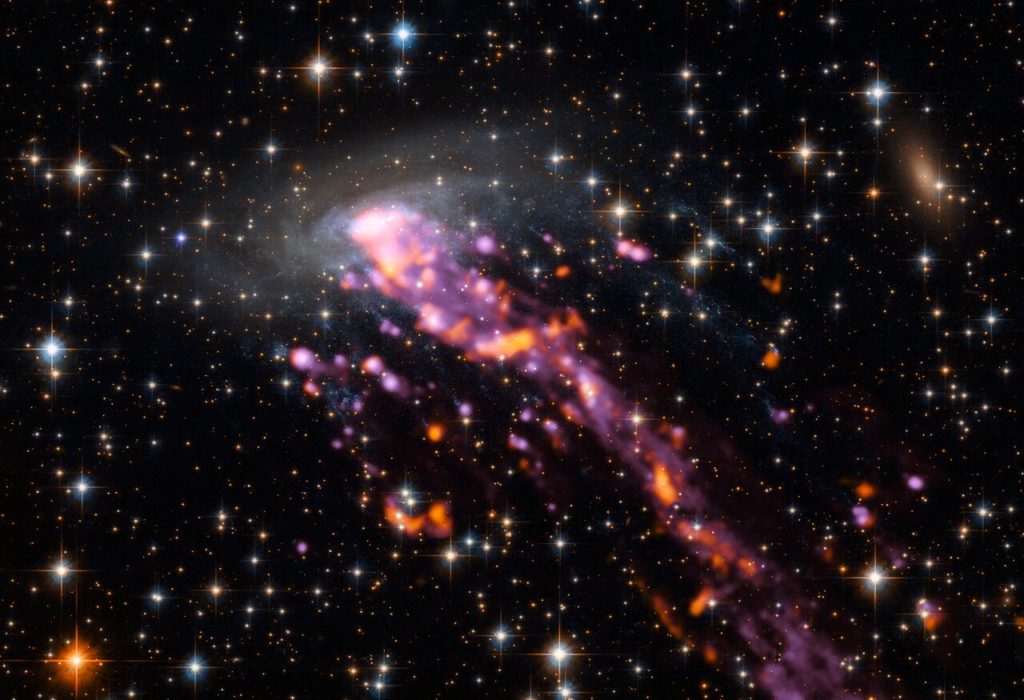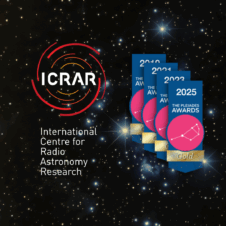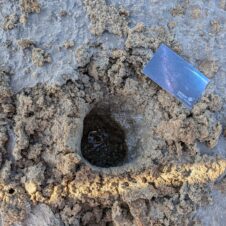Jellyfish galaxies are named after the gas tentacles of gas and young stars they trail behind them, which are an unlikely place for stars to be formed. Usually stars are born within galaxies, and no one really knows how stars are able to form in the tails of jellyfish galaxies. One of the closest jellyfish galaxies to us, the Norma cluster galaxy ESO 137-001, was recently fully mapped using ALMA and other telescopes. Astronomers (including ICRAR’s Dr Luca Cortese) discovered that it contained cold molecular hydrogen in its tail, supporting the idea that stars are formed in the tail instead of being formed in the galaxy and being left behind in the tail.

This image of ESO 137-001 is a composite of data from several telescopes; the optical light is from the Hubble Space Telescope, the orange regions are cold gas/molecular hydrogen (-250°C) detected with ALMA, and the purple regions are warm gas (~10,000°C) detected with VLT.
It’s the first time that a detailed map of the molecular hydrogen distribution in Jellyfish galaxies has been obtained, giving the most complete view of the different components of the tail to date.
The telescopes:
- Atacama Large Millimeter/submillimeter Array (ALMA), a 66-dish radio telescope in Chile, run as an international partnership between teams in Europe, USA, Canada, Japan, South Korea, Taiwan, and Chile.
- Very Large Telescope (VLT) operated by the European Southern Observatory in northern Chile.

